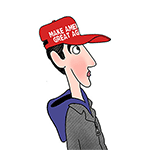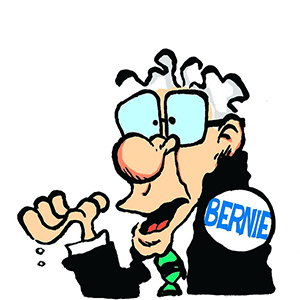Americans Need to Dance
The late 1970s were a sad time for America. The Vietnam War had just ended. Big cities fell in the grip of crime and neglect as the 1975 fiscal crisis pushed New York City to the brink of bankruptcy.
New York uniformed police, angry at the mayor's budget cuts, handed out "Welcome to Fear City" leaflets at the airports. Featuring a hooded skull, the flyers warned visitors to stay off the streets after 6 p.m. It urged them to not leave Manhattan and to avoid the subways altogether.
Yet two years almost to the day after Saigon fell, an ambitious dance club opened on a shabby side street of Manhattan. Studio 54 became the world's most famous disco. Then came the movie "Saturday Night Fever," its score dominated by those rhythmic Bee Gees chart-toppers starting with "Stayin' Alive." Americans found joy under the spinning mirrored balls. To quote the name of Chic's super disco hit, they wanted to "Dance, Dance, Dance."
We needed disco then. We need disco again -- or something like it. The pandemic is over, and many of us are seeking escape from our toxic politics.
What about disco set off the animal spirits? Discos enabled ordinary people to dance off their anxieties to a simple four-on-the-floor beat. The grayness outside got blocked out by flashy sequins and spandex -- and in fantasy settings divorced from the grim realities. Disco replaced the dirty jeans and stoned-out pain of rock with groomed elegance. People again danced in couples.
As Regine Zylberberg, owner of Regine's, an elegant disco on Manhattan's Upper East Side, bragged, "I am the one who saved the city from bankruptcy. I made it happy again."
But disco fever spread across the country, in big cities and small towns. Discos opened at airport Holiday Inns.
Live entertainment, part of what's now called the "experience economy," is seeing double-digit growth, Bloomberg News reports. As evidence, it points to a packed nightclub in Manhattan called Somewhere Nowhere, where swing dancers have taken over the floor.
Patrick Soluri, whose Prohibition Productions puts on swing nights, says revenue from his Jazz Age-themed events has more than doubled since 2019, and he is expanding beyond New York.
The key to disco's popularity was that the people were the show. They weren't passively watching guitarists showing off their long solo riffs, one complaint against '70s rock. More recently, hip hop presents the same drawback with artists commanding the spotlight.
A communal culture that shares some similarities to disco is Western line dancing. Though around forever, line dancing got a boost from the 1980 film "Urban Cowboy." It did for that genre some of what "Saturday Night Fever" did for disco.
As with disco, line dancers are the show. And there are also fashions attached -- those fabulous cowboy boots and hats, jeans and denim skirts. And as with disco, Western line dancing now has its own clubs and events all over the country.
Ironically, the digitalization of American life isn't so much killing these experiences as exposing us to the joys of being there in person. No matter how terrific the video production, it can't recreate the visceral thrill of dancing amid a celebratory crowd.
Disco inspired a kind of second Jazz Age. And although its golden era is almost 50 years in the past, one can't help but notice all those store windows now decked out for the holidays with sparkling disco balls. To this day, disco balls radiate fun and glamour and partying.
Today, like then, we need a scene in which Americans can let loose, work off tensions, forget about Washington -- and with a dance that anyone can do. Americans need to dance, dance, dance.
========
Follow Froma Harrop on Twitter @FromaHarrop. She can be reached at fharrop@gmail.com. To find out more about Froma Harrop and read features by other Creators writers and cartoonists, visit the Creators webpage at www.creators.com.
----
Copyright 2024 Creators Syndicate, Inc.























Comments